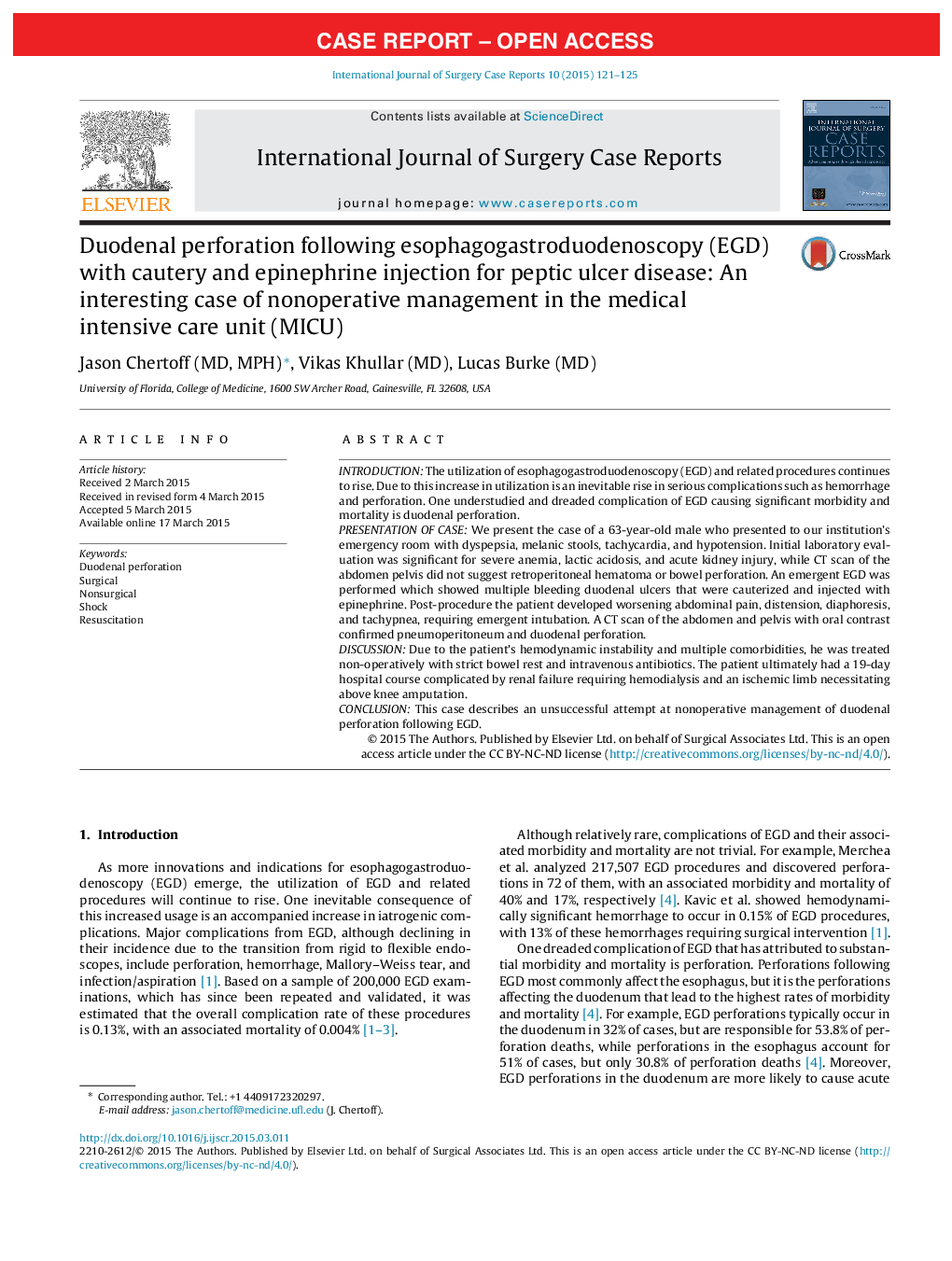| کد مقاله | کد نشریه | سال انتشار | مقاله انگلیسی | نسخه تمام متن |
|---|---|---|---|---|
| 4288969 | 1612105 | 2015 | 5 صفحه PDF | دانلود رایگان |

• One dreaded complication of EGD that has attributed to substantial morbidity and mortality is duodenal perforation.
• Due to its relative infrequency, significant ambiguity exists surrounding the optimal management of duodenal perforations following EGD.
• We describe a case of nonoperative treatment for duodenal perforation following EGD that ended in mortality.
• The case we present here is novel and unique in that it describes the medical management of an uncommon and devastating complication of a procedure that is frequently performed.
• Outcomes for duodenal perforation following EGD appear to be improved when select patients with duodenal free wall perforation leading to peritonitis and hemodynamic instability are taken for laparotomy and surgical repair.
IntroductionThe utilization of esophagogastroduodenoscopy (EGD) and related procedures continues to rise. Due to this increase in utilization is an inevitable rise in serious complications such as hemorrhage and perforation. One understudied and dreaded complication of EGD causing significant morbidity and mortality is duodenal perforation.Presentation of caseWe present the case of a 63-year-old male who presented to our institution’s emergency room with dyspepsia, melanic stools, tachycardia, and hypotension. Initial laboratory evaluation was significant for severe anemia, lactic acidosis, and acute kidney injury, while CT scan of the abdomen pelvis did not suggest retroperitoneal hematoma or bowel perforation. An emergent EGD was performed which showed multiple bleeding duodenal ulcers that were cauterized and injected with epinephrine. Post-procedure the patient developed worsening abdominal pain, distension, diaphoresis, and tachypnea, requiring emergent intubation. A CT scan of the abdomen and pelvis with oral contrast confirmed pneumoperitoneum and duodenal perforation.DiscussionDue to the patient’s hemodynamic instability and multiple comorbidities, he was treated non-operatively with strict bowel rest and intravenous antibiotics. The patient ultimately had a 19-day hospital course complicated by renal failure requiring hemodialysis and an ischemic limb necessitating above knee amputation.ConclusionThis case describes an unsuccessful attempt at nonoperative management of duodenal perforation following EGD.
Journal: International Journal of Surgery Case Reports - Volume 10, 2015, Pages 121–125